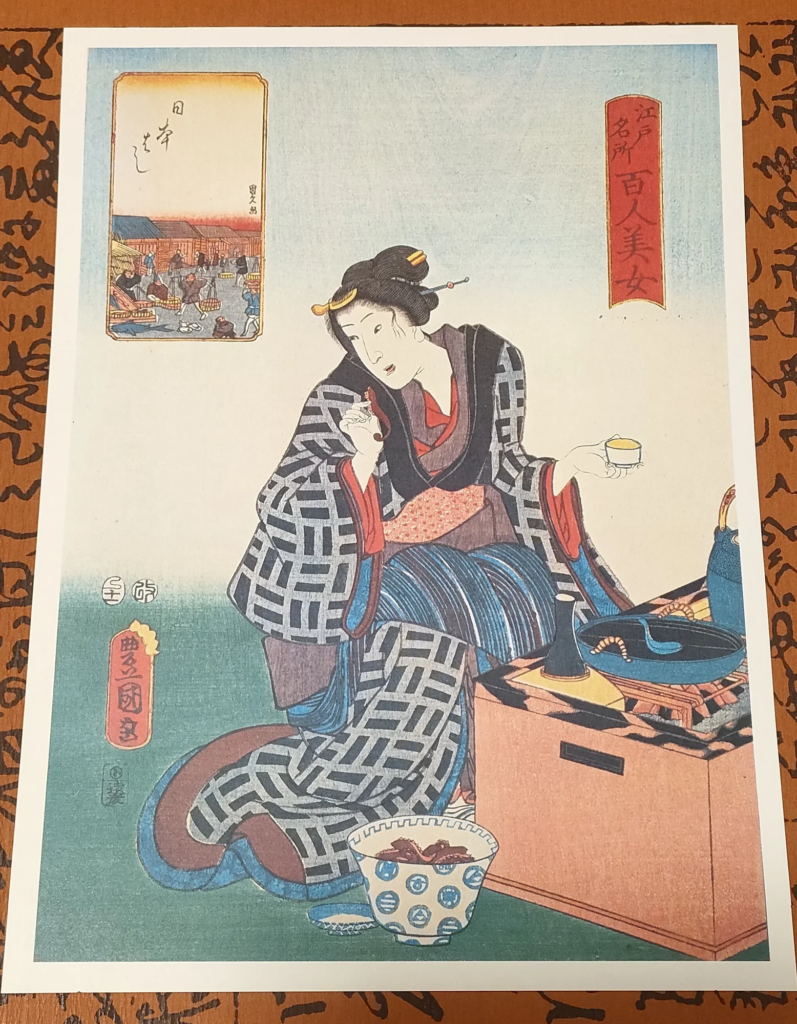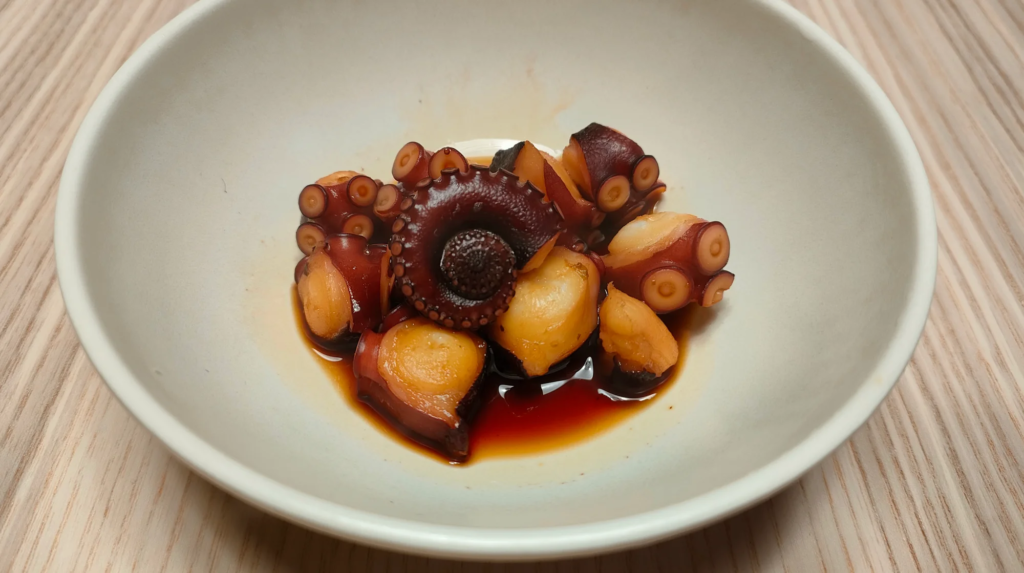
Rediscovering Edo/Tokyo’s Gastronomy through Art
In “Food in Ukiyo-e”, we’ve explored various fish dishes depicted in Ukiyo-e. While savoring the tastes of Edo through these artistic representations has been our ongoing theme, nothing beats the actual experience of tasting these historic dishes. Drawing on my previous attempts to recreate recipes from the Edo period, I embarked on a new challenge: to recreate an octopus dish illustrated in ukiyo-e.

The artwork in focus is “Edo Meisho Hyakunin Bijin Nihonbashi” by the third generation Utagawa Toyokuni, depicting a woman enjoying warmed sake with what appears to be a stewed octopus dish. The woman exudes the aura of a confident ‘older sister’, fitting for the beauty standards of Edo. The upper-left panel also showcases a depiction of Nihonbashi by Utagawa Toyohisa, hinting at the fish market that once thrived there, suggesting the octopus is of Edo origin.
Unusual Ingredients Create Unforgettable Flavors
Edo-period cookbooks feature several octopus recipes, notably the “Edo-ni” octopus from the 1730 culinary guide “Ryourimoumoku Choumi Shou”. Inspired by the writings of Ayano Hayashi, I recreated this dish, which involves simmering the octopus in green tea and sake before seasoning with soy sauce and yuzu. Despite my initial skepticism, the process was straightforward: mix green tea and sake in equal parts, simmer the octopus until tender, then add soy sauce and yuzu and reduce for about ten minutes.
https://honto.jp/netstore/pd-book_26073601.html
As the dish simmered, it transformed from an odd-colored mixture to a more traditional stewed appearance, with the octopus taking on a pleasing reddish hue. The addition of soy sauce and yuzu not only enhanced the aroma but also my appetite.

A Taste of Edo: Modern-day Delight in Historical Cuisine
The first bite was a revelation. The combination of green tea and sake added depth to the flavor, and although I may have brewed the tea too strongly, the dish had a gentle, satisfying taste that surely would have complemented sake. This culinary adventure into Edo’s fish diet was not only enjoyable but enlightening.
Continuing to explore historical documents and paintings, I aim to delve deeper into this fascinating world, bringing the flavors of the past into the present.
Citation
The image of Ukiyo-e in this page is cited from ‘sakana zukushi’, supervised by Yasuo Suehiro